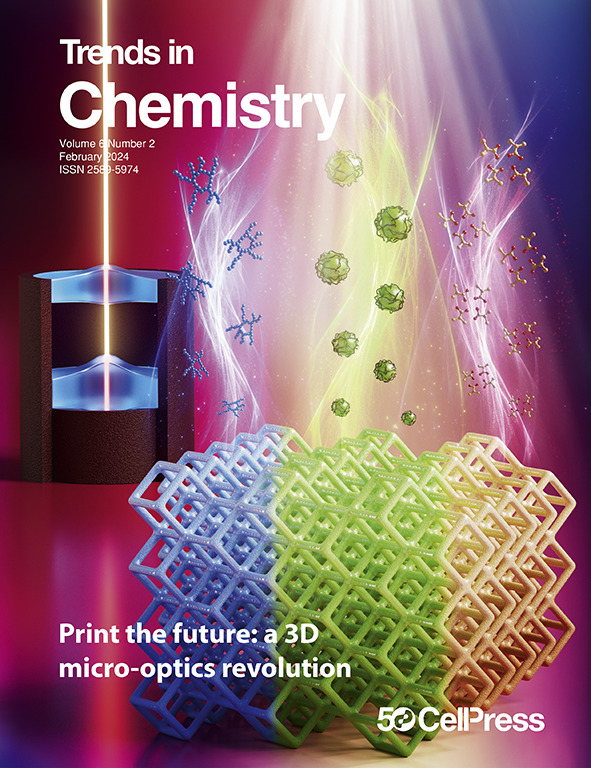用于微生物细胞外电子传递的先进电极材料
IF 13.6
2区 化学
Q1 CHEMISTRY, MULTIDISCIPLINARY
引用次数: 0
摘要
使用电活性微生物的生物电化学系统的应用领域包括能源生产、微生物电合成、电发酵和生物传感。在这些系统中,加强微生物与电极之间的胞外电子传递(EET)是一个快速发展的领域。本综述介绍了新型电极材料开发方面的最新进展,包括导电聚合物 (CP)、普通纳米材料、MXenes 和金属有机框架 (MOF),以增加微生物电化学反应的导电性和表面积。我们还讨论了未来的电极,重点是计算合理设计和在设计过程中考虑微生物观点的方法。这些方法包括图案化以实现与生物相关的表面结构,以及模仿细胞外基质以形成人工生物膜。本文章由计算机程序翻译,如有差异,请以英文原文为准。
Advanced electrode materials for microbial extracellular electron transfer
Bioelectrochemical systems using electroactive microorganisms have applications including energy generation, microbial electrosynthesis, electrofermentation, and biosensing. Enhancing extracellular electron transfer (EET) between microorganisms and electrodes in these systems is a rapidly evolving field. This Review presents recent and emerging advances in the development of novel electrode materials, including incorporation of conductive polymers (CPs), common nanomaterials, MXenes, and metal–organic frameworks (MOFs) to increase the conductivity and surface area available for microbial electrochemical reactions. We also discuss electrodes of the future, focusing on computational rational design and approaches that consider the microorganisms’ perspective in the design process. These include patterning to achieve biologically relevant surface architecture and mimicking the extracellular matrix to form artificial biofilms.
求助全文
通过发布文献求助,成功后即可免费获取论文全文。
去求助
来源期刊

Trends in Chemistry
CHEMISTRY, MULTIDISCIPLINARY-
CiteScore
28.00
自引率
0.60%
发文量
138
期刊介绍:
Trends in Chemistry serves as a new global platform for discussing significant and transformative concepts across all areas of chemistry. It recognizes that breakthroughs in chemistry hold the key to addressing major global challenges. The journal offers readable, multidisciplinary articles, including reviews, opinions, and short pieces, designed to keep both students and leading scientists updated on pressing issues in the field.
Covering analytical, inorganic, organic, physical, and theoretical chemistry, the journal highlights major themes such as biochemistry, catalysis, environmental chemistry, materials, medicine, polymers, and supramolecular chemistry. It also welcomes articles on chemical education, health and safety, policy and public relations, and ethics and law.
 求助内容:
求助内容: 应助结果提醒方式:
应助结果提醒方式:


